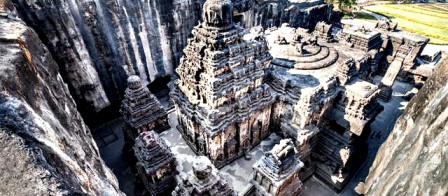Jainism in Indian History – History Study Notes & Stuff
Jainism in Indian Ancient History
In the sixth century BC, two new religions - Jainism and Buddhism - rise in India. The main reason for the rise of these religions was the religious unrest at that time in the country. The rise of Jainism in India was due to these factors.
Jain Tradition:
- The Jain tradition had a succession of tirthankaras.
- The first Tirthankara was Rishabh Dev.
- 23rd Tirthankara was Parshvanath who founded Jainism.
- According to Jain tradition, time is infinite and downward. The Tirthankaras appear in succession in time, to teach them how to free the soul from the physical entanglements of this world.
Vardhaman Mahavira (539- 467 B.C.)
- Vardhamana Mahavira was the 24th Tirthankara of the Jain tradition and considered the last tirthankara.
- He was born around 546 BC in Kundagrama near Vaishali.
- He was born in a Kshatriya family and parents name was Siddhartha and Trishala.
- He was married to Yasoda and after her marriage had a daughter named Priyadarshana.
- He renounced the world at the age of 30 to become an ascetic and wandered for twelve years. He also practiced self-liberation for these years.
- In the 13th year of his penance, he conquered himself and attained the highest spiritual knowledge. This knowledge is called
- After that he was called Mahavira, Jina, Kevalin.
- His followers were called Jain and this religion is known as Jainism.
- From this time until his death, he preached his doctrine for 30 years.
- He died at the age of 72 in Pava near Rajgriha (now in Patna district).
Teachings of Mahavira:
- Jainism does not accept the authority of Vedas and Vedic rituals.
- They do not believe in God.
- Hence Jains do not worship God but worship their Tirthankaras (souls have attained salvation).
- Three principles of Jainism are also known as TriRatna (three gems) are:- – right faith, right knowledge, right conduct.
- Right faith - This is the belief in Mahavira's teachings and knowledge. True faith is expected from followers of Jainism.
- Right Knowledge - It is an acceptance of the doctrine that states that there is no God and that the world exists without a creator, all things have a soul.
- Right conduct - It speaks of the observance of the five great vows: - Not to injure life, not to lie, not to steal, not to gain property, not to live immoral life.
- All had to strictly follow the principle of non-violence.
- Mahavira considered all objects, both conscious and inanimate, to have souls and different degrees of consciousness.
- He believed that all things belong to life and also feel pain when hurt.
- Mahavira advocated a very holy and moral code of life.
- He even considered agriculture as sinful because it hurt the earth, insects and animals.
- The doctrine of austerity and renunciation was considered the shortest path to salvation by going to extreme lengths to practice starvation, nudity, and other forms of self-torture.
Spread of Jainism:
- Mahavira also organized the Sangha to spread his teachings like Buddhism.
- He accepted both men and women in the union (Sangha).
- Union (Sangha) consisted of both monks and lay followers.
- The rapid rise of Jainism was due to the dedicated work of the Union (Sangha) members, who spread Jainism in Western India and Karnataka.
- Jainism was patronised by rulers like Chandragupta Maurya, Kharavela of Kalinga and the royal dynasties of south India like the Ganges, the Kadambas, the Chalukyas and the Rashtrakutas
Division of Jainism:
- The division in Jainism took place by the end of the fourth century BC.
- A serious famine occurred in the Ganges valley. Various Jain monks led by Bhadrabahu and Chandragupta Maurya went to Shravanabelagola in Karnataka. These came to be known as Digambara (Those who do not wear clothes). He strictly followed the tenets of religion.
- The monks who returned to North India were led by Shatulabahu, who changed the code of conduct for the monks. This sect started wearing white clothes. Therefore, he came to be known as Svetambar (the one wearing the white clothes).
Jain Councils/ Sangeeti:
- In 3rd century B.C , the first Jain Council was convened at Pataliputra headed by Sthulabhadra.
- In the 5th century A.D. the Second Jain Council was organized under Devarshini at Valabhi in Gujarat. Where the compilation of Jain literature called twelve Anga was completed.
If you want us to add any more details to this article, please do let us know in the comments below.










0 Comments